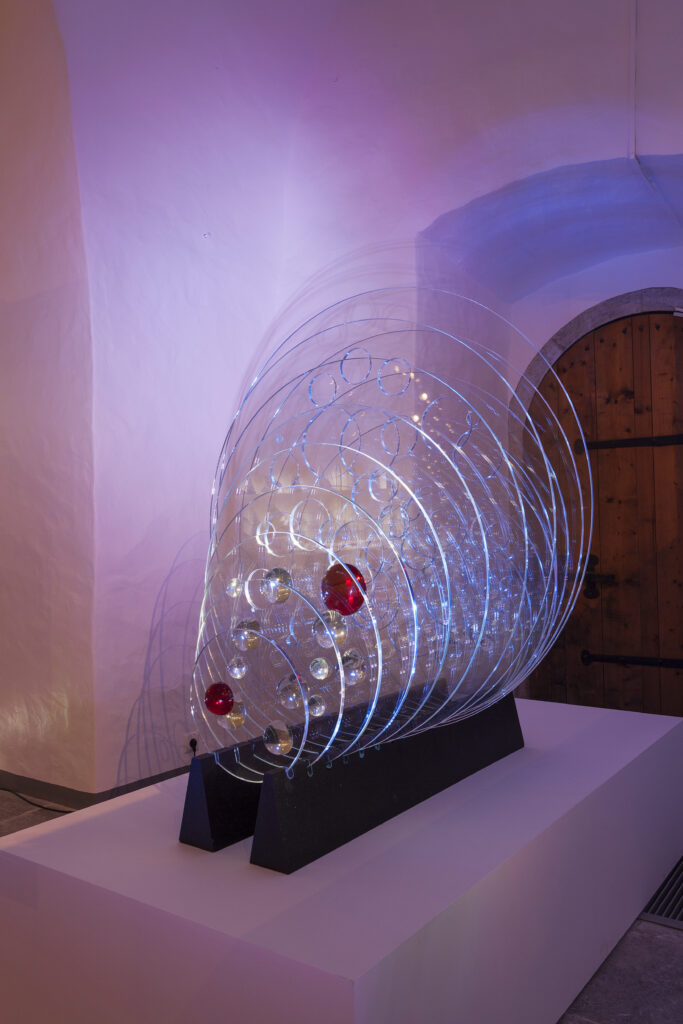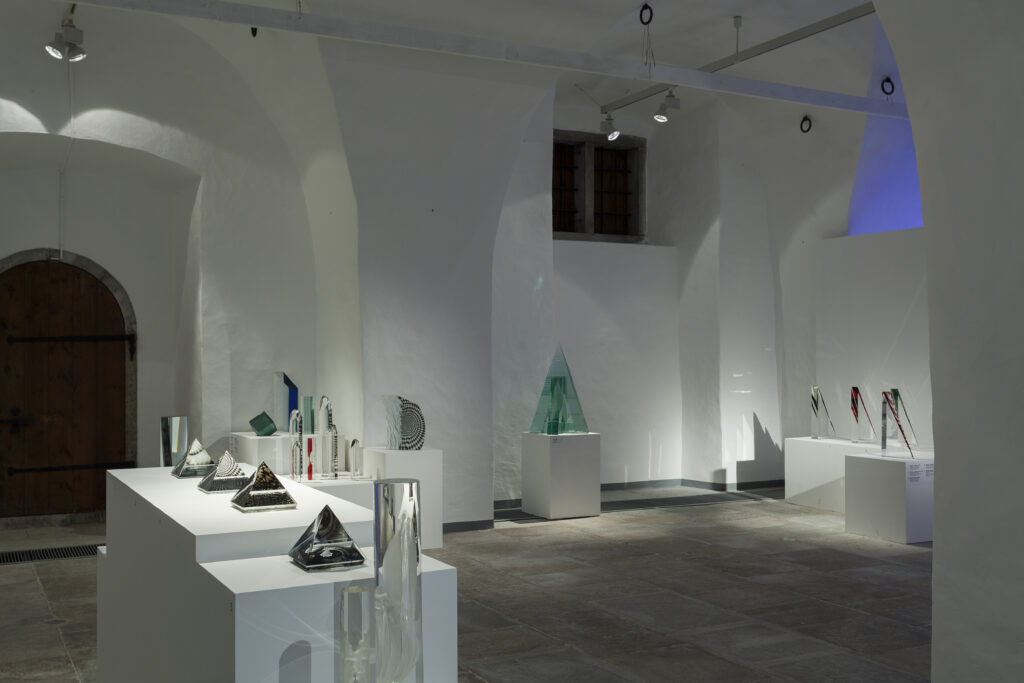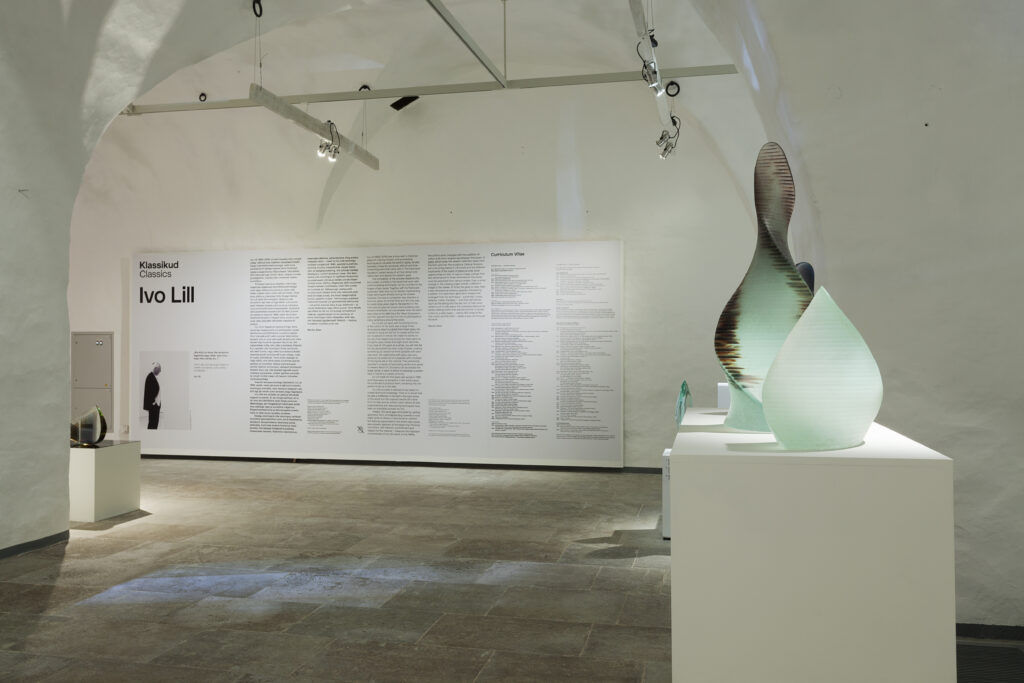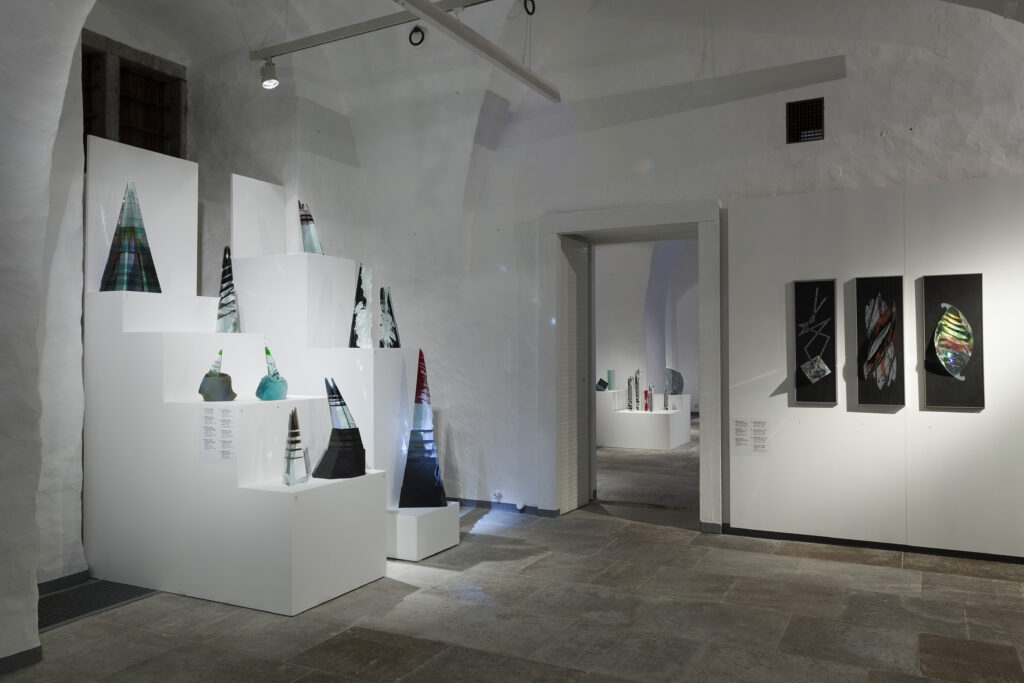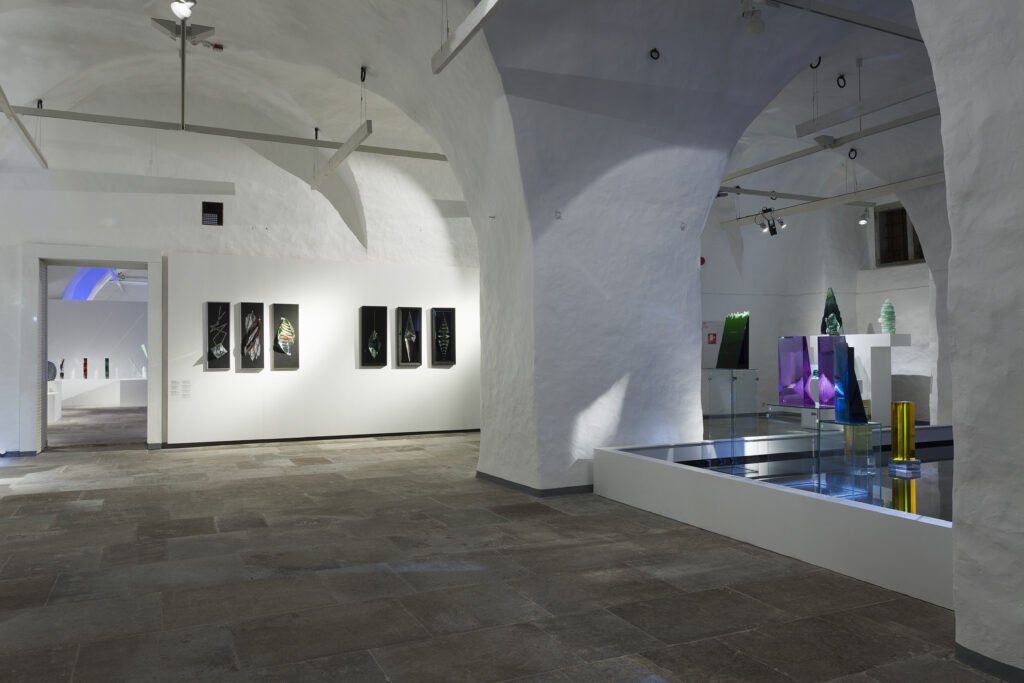Archive
Classics. Ivo Lill
20.02.–26.09.2021
Ground floor hall
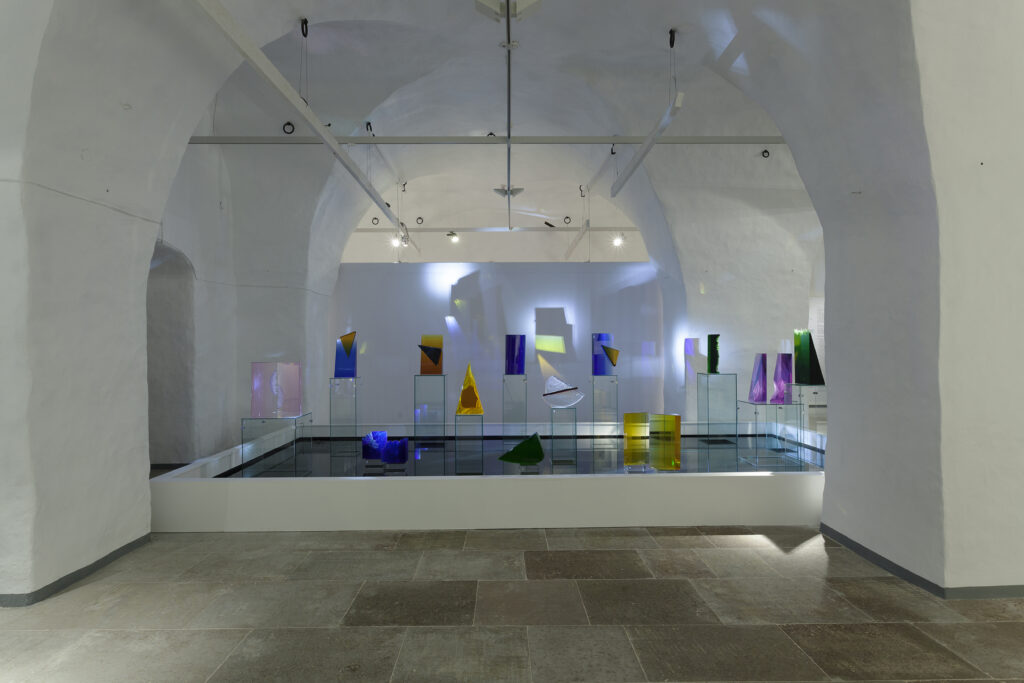
Ivo Lill (1953–2019) was a lone wolf in Estonian glass art. Having chosen cold processing techniques to visualise his world in glass, he also inevitably chose the physically difficult and time-consuming work that came with it. The hard work resulted in radiant works of art that refract and reflect light and absorb the viewer’s gaze.
The complexity of the process explains why the number of artists in the world that work with cold processing techniques can be counted on the fingers of two hands. Together with his friend and supervisor Vello Soa, Ivo Lill started implementing these techniques already during his studies. However, this was a completely new direction in Estonian glass art at that time and the only way to create large glass objects. Recognition in the international glass art scene came suddenly and almost immediately at a remarkable level: His talent was noted at the 1988 Nový Bor Glass Symposium and this opened the door for him to participate at many exhibitions around the world.
Ivo Lill did not work with functional forms, at the centre of his work was a large three-dimensional object sculpted from sheet glass. His interest in visual art led him to create works that are sculptural in nature. He made his works on his own from beginning to end; his tools were his thoughts, eyes, hands and eight work benches. If you look at Lill’s work as a whole, you will feel like he has discovered the inner code of glass, creating something you would not think possible with each new work. His relationship with glass was very personal, he preferred to cooperate with it instead of forcing his will on the material. This partnership resulted in a series of fascinating works that spoke to viewers. Much of Lill’s works can be divided into larger series, in each of which he develops a certain idea or theme in a variety of forms.
Ivo Lill made his first glass wall panels in 1985 and these were no exception in the artist’s work. He continued to produce them, remaining the only person to do so in the field.
Ivo Lill’s success is deemed to be based on a deep technical knowledge. There is no doubt that he was a craftsman in his field in the best sense of the word, but the inspired results still came from an idea and an artistic vision above all else. Experimenting and discovering techniques have been an enjoyable process for him.
Initially, Lill’s work was dominated by vertical geometric form, at times tending towards a more static while at others a more dynamic solution, but features appreciated in the artist’s later works were already apparent at the beginning. Personal conviction, self-reliance, commitment and respect for the material – these are the important cornerstones of Ivo Lill’s work. In the 1990s, the artist’s work changed with the addition of colour and mirror engravings between the layers of glass, which draw the viewer’s attention away from the form and into the sculpture. Optical illusions are a recurring theme in Lill’s work and the different treatments of the layers of glass provide great opportunities for this. To see an image change from two-dimensional to three-dimensional, the works must be examined from various angles. Even a small change in the viewing angle reveals a different image to the viewer: at times the glass is clear, then a two-dimensional drawing appears, followed by a pattern. Lill used basic geometric shapes that emerged from his technique – pyramids, cones, spheres, cubes, triangles – and their derivatives such as the swing and the sail. Ivo Lill has never cared much to talk about the motivation behind his works, stating briefly that everything that is stored in him on a daily basis – nature, the noise of the city, music and life itself – seeks a way out through his work.
The exhibition series Classics has been held at the museum since 2000. With this series, the museum wishes to highlight the work of artists and designers who have been active over a long period and whose work has been consistently outstanding.
Curator: Merike Alber
Co-curator and consultant: Irene Lill
Exhibition design: Maret Kukkur
Lighting design: Airi Eras, Teet Orupõld
Production: Valge Kuup Stuudio
Graphical design: Stuudio Stuudio
Language editor (Estonian): Hille Saluäär
English translation: Refiner Translations
Photography: Ülo Josing, Paul Kuimet
Exhibition team in the museum: Kai Lobjakas, Ketli Tiitsar, Toomas Übner, Silvia Pärmann, Helen Adamson
Thank you: Irene Lill and family of the artist, Eve Koha, Jüri Kermik, Katrin Josing
Supported by The Estonian Cultural Endowment
Publications
Exhibition catalog “Classics. Ivo Lill”
Leaflet “Classics. Ivo Lill”
Gallery
Photos: Paul Kuimet
